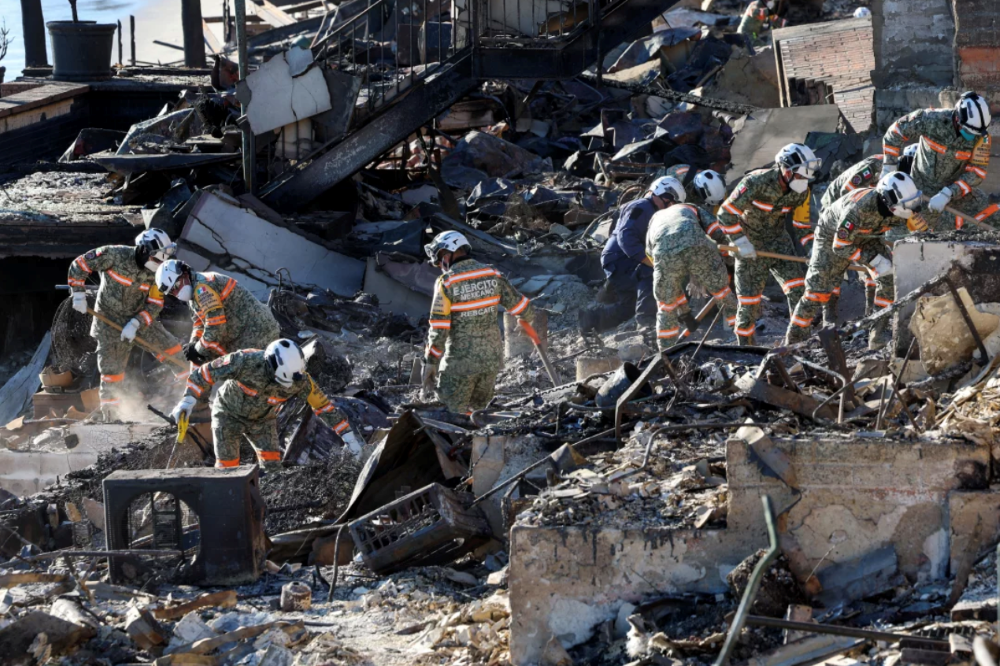Posted 3:31 p.m. Wednesday, Jan. 15, 2025

Children's picture books that can help with uncertainty, resilience, home, and hope
Now that the worst of the wildfires is hopefully behind, families and people are seeing the immense path of uncertainty and rebuilding that will need to take place.
Children will be experiencing grief and anxiety. Messages of resilience and hope in the search for home can come through the pages of a picture book.
The beauty of stories in books is that the reader sees another character dealing with the same kind of emotions, which can lead to helpful conversations and dialog with children about how to deal with their own emotional upset.
Below are a few selected picture books in the Alice Hagar Curriculum Center. They may not deal directly with wildfires, but the subjects of uncertainty, resilience, home, and hope are front and center.

Sometimes you have to move, even if you don't want to.
After the wildfires, many families and children now are facing a new normal--having to accept that their home is gone.
In this picture book, a father and son learn to accept the new while honoring and celebrating the old. This single parent family has lived in an old rental house as long as the boy can remember. But when they learn that their house will be razed for a redevelopment of the neighborhood, they have to leave. The boy wonders if he'll ever find a home again.
Although the reason for moving isn't tied to a wildfire, the anxiety that comes along with having to leave home behind can be reframed with stories.
The blue house (2020) by Phoebe Wahl
Murphy Library Alice Hagar Curriculum Center (2nd floor) call # E Wah (picture book section)

Describing home can be harder than one thinks, especially when home is taken away abrubtly.
In this picture book, home is defined and described in many ways. A view from a window, a favorite chair, the sound of the screen door. A family learns what home really means, as they leave their home to make a new one elsewhere. Reading this book with a child can lead to expressions of what home means, that home can mean many things, but especially that at home, everything should always feel comfortable and safe.
In a new normal, families are struggling to find comfortable and safe. Books and stories can help facilitate those conversations.
Home is a window (2019) by Stephanie Parsley Ledyard
Murphy Library Alice Hagar Curriculum Center (2nd floor) call # E Led (picture book section)

Shelters get a bad rap in a kid's mind, but they exist to provide temporary protection and shelter.
After the wildfires, many families and children may not be able to move in with family or friends. They will experience shelters for the first time. This can be upsetting.
In this picture book, the protagonoist child finds herself moving into a women's shelter with her mother. Afraid and uncertain at first, she is welcomed, meets other children, and learns to adjust to a new normal.
The book includes informational endnotes detailing reasons people experience homelessness and the resources available to help.
A place to stay: A shelter story (2020) by Erin Gunti
Murphy Library Alice Hagar Curriculum Center (2nd floor) call # E Gun (picture book section)

Wordless picture books are just that--only images with the text being impromptu and provided by the reader. It's a great opportunity for the reader/s to claim the story for themselves, give their own interpretations, and even project their experience through conversation.
This picture book is a wordless one about an unhoused woman living on the street, seen by no one and ignored by all--except for a little boy.
Over the course of a year, the boy watches her. Finally, in a gesture of compassion, he acknowledges her in an exchange where he sees her, and she experiences being seen.
This book opens the door for kids and parents to begin a conversation about homelessness.
At the end, the author has included discussion questions and additional resources about acknowledging and helping the homeless.
I see you: A story for kids about homelessness and being unhoused (2017) by Michael Genhart
Murphy Library Alice Hagar Curriculum Center (2nd floor) call # E Ger (picture book section)
For more information or assistance with the Alice Hagar Curriculum Center, send questions to Teri Holford, Education Liaison Librarian (tholford@uwlax.edu).


